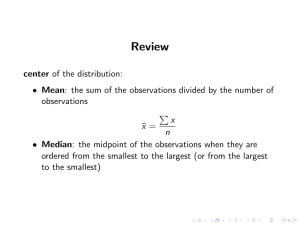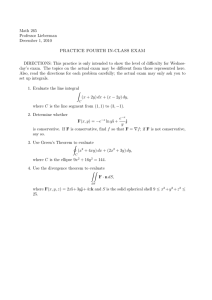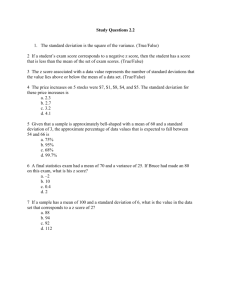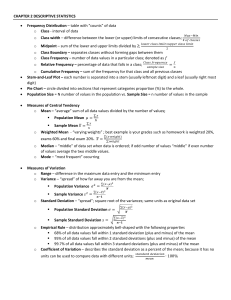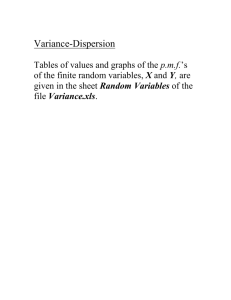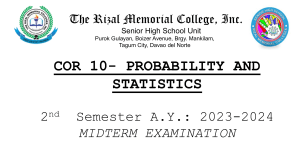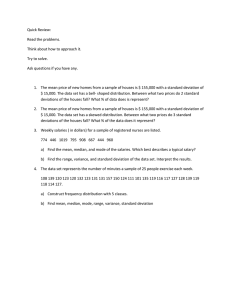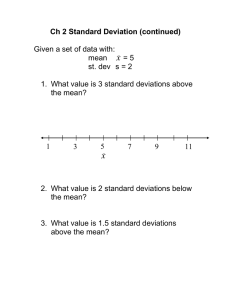Tchebysheff's Theorem Explained with Example
advertisement
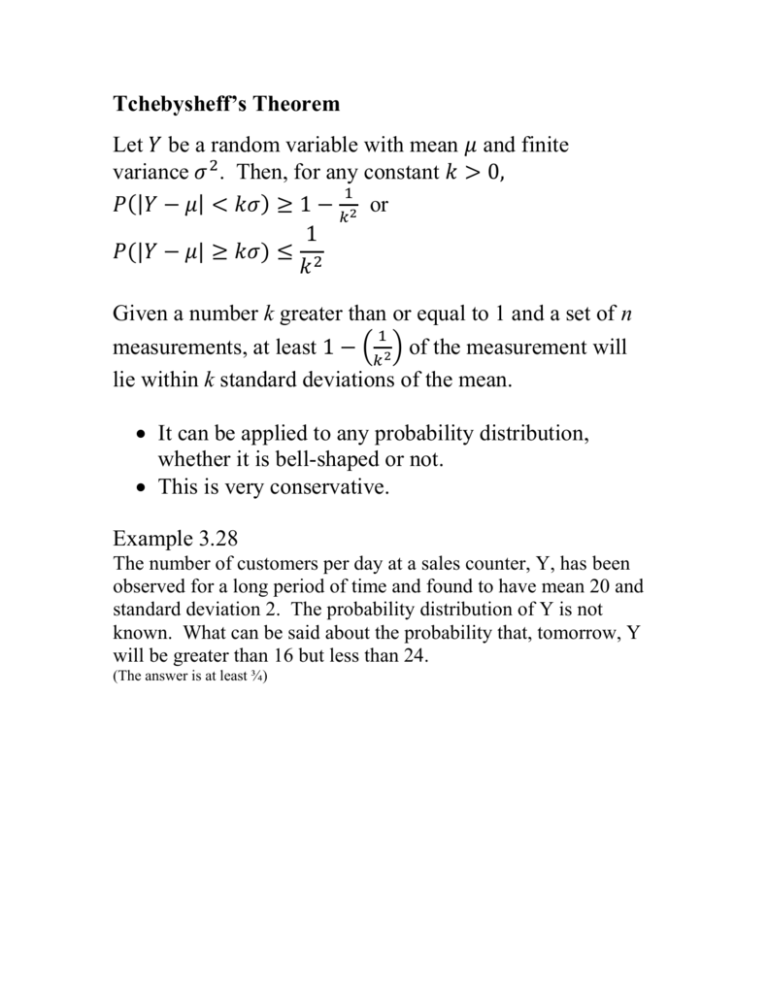
Tchebysheff’s Theorem Let 𝑌 be a random variable with mean 𝜇 and finite variance 𝜎 2 . Then, for any constant 𝑘 > 0, 1 𝑃(|𝑌 − 𝜇| < 𝑘𝜎) ≥ 1 − 𝑘 2 or 1 𝑃(|𝑌 − 𝜇| ≥ 𝑘𝜎) ≤ 2 𝑘 Given a number k greater than or equal to 1 and a set of n 1 measurements, at least 1 − (𝑘 2 ) of the measurement will lie within k standard deviations of the mean. It can be applied to any probability distribution, whether it is bell-shaped or not. This is very conservative. Example 3.28 The number of customers per day at a sales counter, Y, has been observed for a long period of time and found to have mean 20 and standard deviation 2. The probability distribution of Y is not known. What can be said about the probability that, tomorrow, Y will be greater than 16 but less than 24. (The answer is at least ¾)


